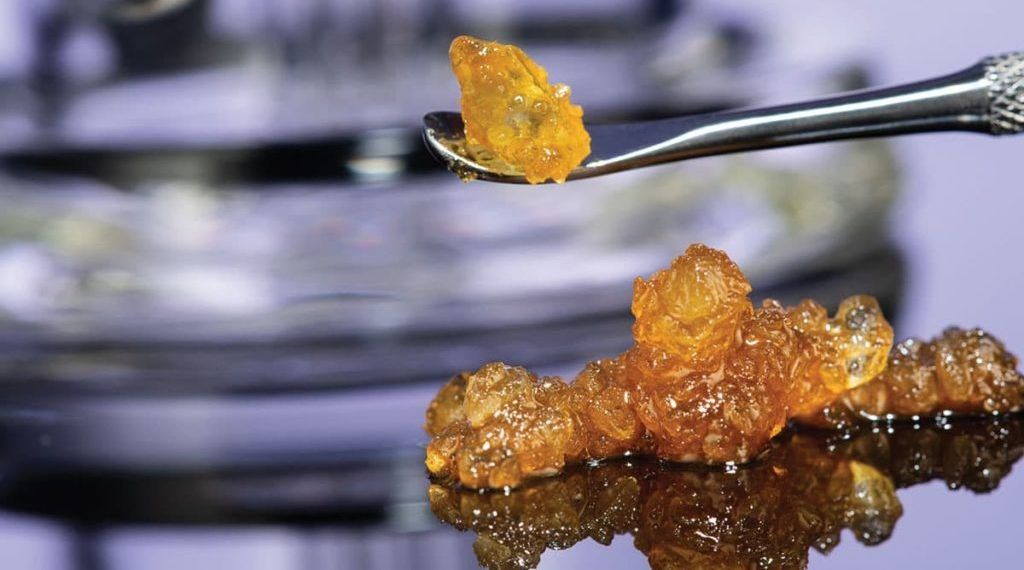Sales of edibles skyrocketed across the nation in 2020 as consumers shied away from inhalable forms of cannabis during the COVID-19 pandemic in favor of more discreet consumption methods.
The surge is prompting edibles manufacturers to invest in research and development and new product lines for 2021.
End-of-year data from Seattle-based cannabis analytics firm Headset shows that for all of 2020, sales of adult-use and medical edibles grew by 60% across seven state markets – to $1.23 billion in 2020 from $767 million in 2019.
That performance meant edibles outperformed the total cannabis market, which grew a hefty 54% last year.
The seven states were California, Colorado, Massachusetts, Michigan, Nevada, Oregon and Washington.
According to Headset data analyst Cooper Ashley, edibles increased their market share from 10.65% in 2019 to 11.07% in 2020.
The increase is leading cannabis companies to pour efforts into developing new product types, including faster-acting and strain-specific edibles.
“We’re seeing the edibles space get a little more sophisticated, and we expect that to continue,” Ashley said.
Cannabis edibles makers cited a number of factors behind the greater market shares, including:
- Both new and mature consumers are trying edibles for the first time.
- Consumers are shying away from inhalable products and looking for more discrete options amid the coronavirus pandemic.
“We are seeing continued movement toward edibles and noninhalable forms of consumption,” said Joe Bayern, CEO of multistate marijuana operator Curaleaf, based in Massachusetts.
New buyers
Bayern – who took over as CEO this month – sees an “overwhelmingly large opportunity” in bringing new consumers to cannabis for the first time. He noted an alternative form of consumption such as edibles was a good way to attract newbies.
“Cannabis is not new to consumers,” he said. “If they want to be smoking cannabis, they probably would be.”
The ability to precisely formulate edibles to achieve an intended effect such as relaxation is another positive for the segment, according to Bayern.
In addition, Curaleaf is pushing ahead with the development of fast-acting edibles, a trend that’s been around in the industry for a while now but is only now gaining in popularity.
The company also is pursuing different dosage levels.
Curaleaf’s products can range from 2.5 milligrams up to 30 milligrams of THC for a single serving.
“We’re not just focusing on edibles,” Bayern said. “We’re focusing on the science behind the plant.”
In fact, Curaleaf is expanding its research and development facilities, including a new 10,000-square-foot building in Massachusetts.
Curaleaf also is recruiting employees with backgrounds in food science, chemistry and biology with “expertise from all aspects of the world of science much like other consumer products companies do,” Bayern said.
Experienced users
Mature consumers moving away from inhalable products to edibles is another reason for the market growth, said Guy Rocourt, chief product officer at Papa & Barkley in Eureka, California.
Cannabis consumers who are familiar with the effects of THC from smoking flower or taking tinctures are eventually progressing to edibles, he said.
“People have had their first conversation, and now they can go and take a 5-milligram gummy,” Rocourt said.
Data from Headset backs that up. In Michigan last year, edibles sales for both recreational and medical products grew in market share from 14.4% to 16.5% – or a 14% increase.
To set itself apart from rivals, Papa & Barkley is working on edibles that highlight the taste of cannabis, rather than mask it.
Certain strains of marijuana, for example, pair well with flavors such as milk chocolate.
“We’re trying to create cannabis edibles that highlight cannabis,” Rocourt said.
The company is also investigating how certain components of edibles – such as the sugar in a gummy – will speed up or slow down the effect on a consumer.
Rocourt cited the pandemic as another reason for the increase in edibles sales.
Products such as flower are often shared in cannabis culture, but less so during the pandemic. Edibles can be shared more safely.
He predicts that trend will continue – even after the pandemic.
“Post-COVID we’re all going to be a little more germophobic,” Rocourt added.
Looking ahead
At Las Vegas-based edibles brand Hervé, co-founder Sebastien Centner also is targeting new cannabis consumers.
Centner sees legacy cannabis users as the market for inhalables – not edibles.
“New users who are already very familiar with high-end products in other categories like food are looking for the same thing in edibles,” he added.
According to Centner, cannabis consumers are discerning about what they are ingesting, and as the quality of edibles products continues to improve, more people will be willing to try them.
In response, edibles makers are producing low-sugar, all natural, nonartificial products to appeal to health-conscious consumers.
When the pandemic eventually lifts, Centner sees more consumers building cannabis edibles into their lifestyles when they resume their social lives and travel.
“Everyone’s going to get out and celebrate, and cannabis is going to be a big part of that,” he added.
Similar to Curaleaf, Hervé also sees early onset and microdosing as the future of the product.
“There’s nothing worse than having a product and waiting an hour or hour and a half for it to work,” Centner said.
Small increments of THC that act quickly will help combat the problem of new, impatient users who overdo it by taking one edible and then another to feel the effect.
“If you know you’re going to have an effect, you’re not going to be wondering, ‘Should I do another one? Is it going to kick in?'” Centner said.
The company expects to expand into at least four new markets this year, including California, Colorado, Oregon and Canada.
“It’s just about finding the right markets and launching at the right time,” Centner said. “We really believe 2021 is going to be the year of the edible.”
Bart Schaneman can be reached at barts@mjbizdaily.com







